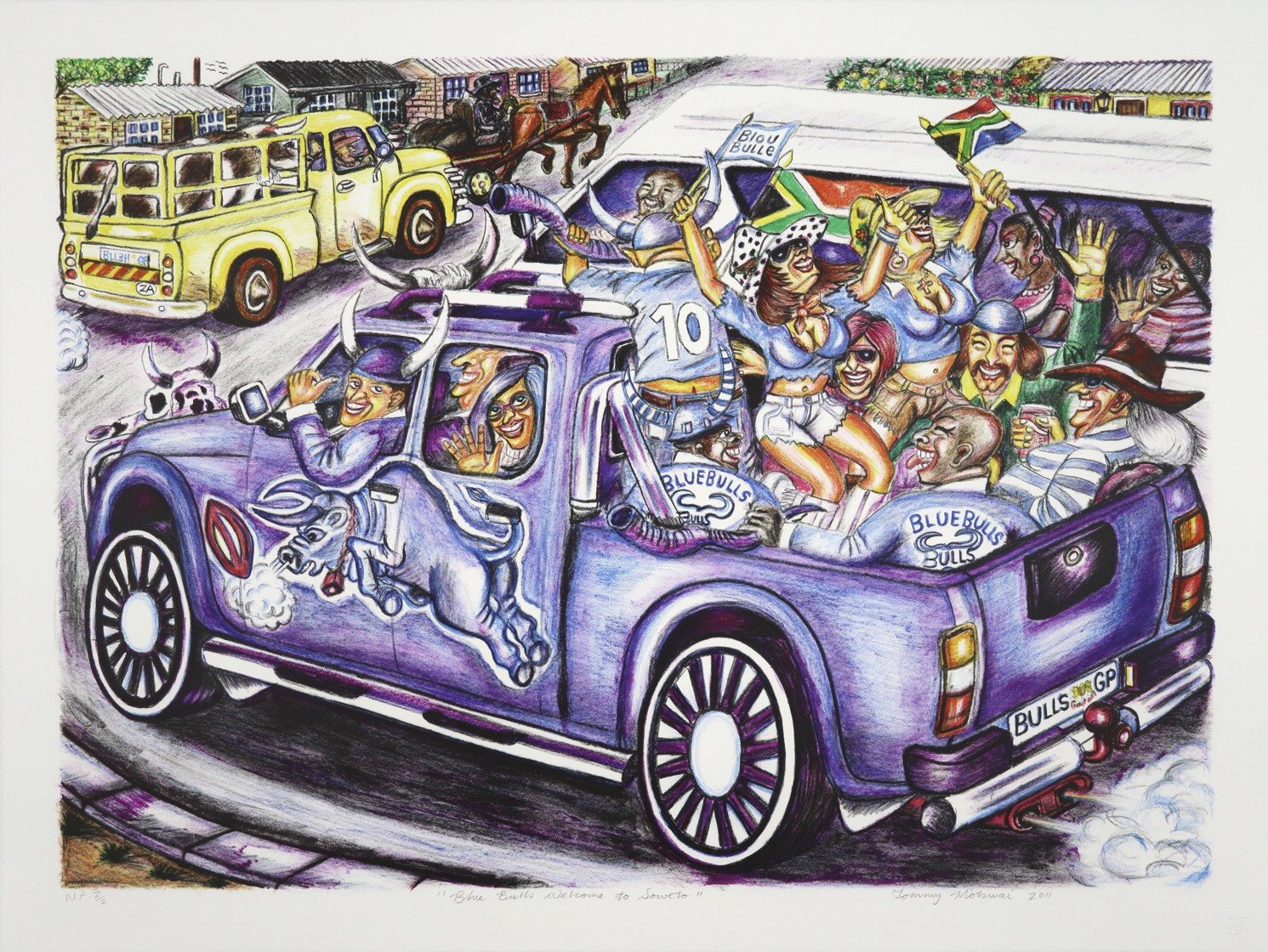Deaf Artists in Africa
Tommy Motswai
“Deaf Artists in Africa" is a captivating exploration of the often-underestimated artistic prowess of Deaf individuals in the African context. This article sheds light on their remarkable contributions to the world of art, highlighting the vibrant tapestry of creativity that transcends language barriers and celebrates Deaf culture's richness.
Deaf Culture in Africa: A Unique Perspective
To understand the world of Afro-Deaf art, it's crucial to delve into the heart of Deaf culture in Africa. Here, sign languages have played a pivotal role in shaping communication and self-expression for centuries. These indigenous sign languages are as diverse as the continent itself, reflecting the cultural and linguistic diversity of Africa.
Historical Perspective
A journey through history reveals the resilience and triumphs of Deaf communities in Africa. Despite significant challenges, Deaf individuals have persevered, carving out spaces for themselves in the world of art. From traditional crafts to contemporary masterpieces, their artistic endeavours have transcended silence to speak volumes.
Deaf Artists in African Countries
One of the most remarkable aspects of Afro-Deaf art is its diversity. Across the African continent, Deaf artists from various countries are leaving their indelible mark on the art world. Their artistic expressions encompass a broad spectrum, ranging from visual arts to performance art, literature, and more. These artists serve as cultural ambassadors, amplifying the rich heritage of their respective nations.
Challenges and Opportunities
Afro-Deaf artists face unique challenges, including limited access to education and resources. However, these challenges have fueled their determination to overcome obstacles and create art that resonates with their experiences. The journey is fraught with hurdles, but it is also filled with opportunities for empowerment and inclusion through art.
Visual Arts
The world of Afro-Deaf visual art is a captivating realm where artists use colours, textures, and forms to communicate their innermost thoughts and emotions. Their artworks not only explore universal themes but also delve into the unique experiences of Deaf individuals in Africa. These artists often incorporate indigenous motifs and cultural symbols into their creations, adding depth and significance to their work.
Performance Art and Dance
Movement is a universal language, and Deaf artists in Africa have harnessed the power of movement and expression in performance art and dance. Their performances transcend auditory boundaries, engaging audiences on a profound level. Inclusive dance and performance initiatives are breaking new ground, fostering greater understanding and appreciation of Deaf artistry.
Literature and Poetry
In the realm of literature and poetry, Deaf authors and poets in Africa are crafting narratives that resonate with Deaf and hearing audiences alike. These artists have mastered the art of storytelling, harnessing the visual and tactile qualities of sign languages to create powerful literary works. Their stories celebrate Deaf culture, history, and identity.
Music and Deaf Musicians
Music knows no boundaries, and Deaf musicians in Africa are proving just that. They use visual and tactile elements to create music that transcends the auditory realm. Deaf music festivals and events showcase their talents, offering a platform for Deaf musicians to share their unique musical expressions with the world.
Community Engagement and Advocacy
Initiatives and organizations supporting Deaf artists in Africa play a crucial role in promoting inclusivity and advocacy. These platforms not only provide resources but also advocate for Deaf rights and awareness through the medium of art. Collaborations between Deaf and hearing artists further strengthen the bonds of artistic unity.
Technology and Access
Technology has opened up new vistas for Deaf artists in Africa, enabling them to reach broader audiences. Innovations in inaccessible art forms and platforms have expanded the horizons of Deaf artistry. Social media, in particular, has played a significant role in amplifying the visibility of Afro-Deaf artists and fostering global recognition.
Educational Initiatives
Institutions and educational programs that support Deaf art education in Africa are pivotal in nurturing the next generation of talented artists. Inclusive art education programs equip Deaf students with the skills and confidence to pursue their artistic passions. Success stories of Deaf artists who have emerged from these programs serve as inspirations for future generations.
Cross-Cultural Influences
Afro-Deaf artists often find inspiration in the intersection of Deaf culture with other African cultures. Their artworks reflect not only their personal experiences but also the rich tapestry of African traditions and histories. Cross-cultural collaborations hold the potential to create art that transcends borders and celebrates diversity.
Future Directions
As we look to the future, Afro-Deaf art is poised for continued growth and recognition. Emerging trends indicate a vibrant and dynamic future for Deaf artists in Africa. Their contributions are reshaping perceptions of Deafness and artistry, challenging stereotypes, and celebrating the unique creativity that knows no boundaries.
In conclusion, Afro-Deaf art stands as a testament to the resilience, creativity, and cultural richness of Deaf individuals in Africa. It is a celebration of the human spirit's ability to transcend challenges and find innovative ways to communicate and express profound emotions and ideas. As we embrace inclusivity and equal opportunities, we open the door to a world of artistry that knows no bounds—a world where silence speaks volumes. Afro-Deaf art is not only a celebration of Deaf culture but also a testament to the power of art to bridge divides and foster understanding in our diverse world.

